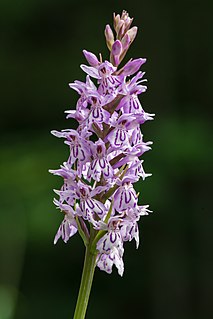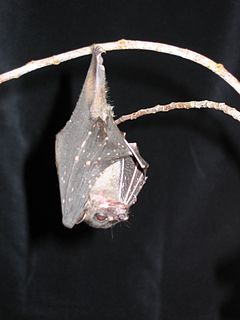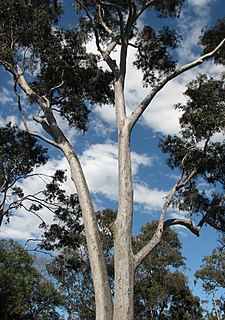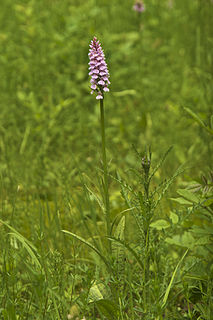
Dactylorhiza fuchsii, the common spotted orchid, is a species of flowering plant in the orchid family Orchidaceae.

Dactylorhiza, commonly called marsh orchid or spotted orchid, is a genus of flowering plants in the orchid family (Orchidaceae). Dactylorhiza were previously classified under Orchis which has two round tubers.

Dolichovespula maculata is a eusocial wasp of the cosmopolitan family Vespidae. Its colloquial names include the bald-faced hornet, bald hornet, white-faced hornet, white-tailed hornet, spruce wasp, blackjacket, and bull wasp. This species is a yellowjacket wasp, not a true hornet. Colonies contain 400 to 700 workers, the largest recorded colony size in its genus, Dolichovespula. It builds a characteristic large hanging paper nest up to 58 centimetres (23 in) in length. Workers aggressively defend their nest by repeatedly stinging invaders.

Corallorhiza maculata, or spotted coralroot, is a North American coralroot orchid flower. Varieties are also known as western coralroot and summer coralroot. It is widespread through Mexico, Guatemala, Canada, St. Pierre & Miquelon, and much of the Western and northern United States. It grows mostly in montane woodlands.

The spotted-winged fruit bat, is the smallest megabat in the world, and the only species in the genus Balionycteris. It inhabits forests in Indonesia and Malaysia.

Holbrookia maculata, commonly known as the lesser earless lizard, is a species of phrynosomatid lizard endemic to the southwestern and central United States and northern Mexico.

The spotted houndshark, Triakis maculata, is a houndshark of the family Triakidae found in tropical waters in the eastern Pacific Ocean off the coast of South America. It usually grows to a length around 180 centimetres (71 in). The reproduction of this houndshark is ovoviviparous, with a litter of 14 pups being found in one female with a birth size of 30 to 40 centimetres. Their diet is believed to consist mainly of crustaceans.
The Wych Elm cultivar Ulmus glabra 'Maculata' was listed as Ulmus scabra maculata in the 1831-1832 catalogue from the Audibert brothers' nursery at Tonelle, near Tarascon in France.

Corymbia maculata, commonly known as spotted gum, is an endemic Australian tree.

Dactylorhiza maculata, known as the heath spotted-orchid or moorland spotted orchid, is an herbaceous perennial plant belonging to the family Orchidaceae. It is widespread in mountainous regions across much of Europe from Portugal and Iceland east to Russia. It is also found in Algeria, Morocco, and western Siberia.

Lysiosquillina maculata, the zebra mantis shrimp, striped mantis shrimp or razor mantis, is a species of mantis shrimp found across the Indo-Pacific region from East Africa to the Galápagos and Hawaiian Islands. At a length up to 40 cm, L. maculata is the largest mantis shrimp in the world. L. maculata may be distinguished from its congener L. sulcata by the greater number of teeth on the last segment of its raptorial claw, and by the colouration of the uropodal endopod, the distal half of which is dark in L. maculata but not in L. sulcata. A small artisanal fishery exists for this species.

Lophocampa maculata is a moth of the family Erebidae. It is found across Canada, the western parts of the United States, south in Appalachians to South Carolina and Kentucky.

Trachylepis maculata is a species of skink in the genus Trachylepis recorded from Demerara in Guyana, northern South America. It is placed in the genus Trachylepis, which is otherwise mostly restricted to Africa, and its type locality may be in error. It is an unstriped, olive-brown, grayish animal, with dark spots all over the body. Its taxonomic history is complex due to confusion with Trachylepis atlantica from the Atlantic Ocean island of Fernando de Noronha and doubts regarding its type locality.
The blotched snakehead is a species of snakehead.It is one of four species of the genus Channa native to China.It is also native northern Vietnam and Taiwan, but has been widely introduced to other countries, where it is an invasive species. This predatory species typically grows to a length of 20–30 cm (7.9–11.8 in), but it has been confirmed at 33 cm (13 in) and some suggest it may reach a far larger size.
Alfred Philpott was a New Zealand museum curator, entomologist and writer. He was born in Tysoe, Warwickshire, England, on 15 December 1870. He became the first person to describe Zelleria maculata in 1930.
Calliini is a tribe of longhorn beetles of the Lamiinae subfamily.
Canindea is a genus of longhorn beetles of the subfamily Lamiinae.
Canindea latithorax is a species of beetle in the family Cerambycidae. It was described by Galileo and Martins in 1991. It is known from Brazil.
Canindea signaticornis is a species of beetle in the family Cerambycidae. It was described by Buquet in 1857. It is known from Brazil and French Guiana.
Mark Alwin Clements (b. 1949) is an Australian botanist and orchidologist. He obtained his doctorate at the Australian National University defending his thesis entitled Reproductive Biology in relation to phylogeny of the Orchidaceae, especially the tribe Diurideae.












